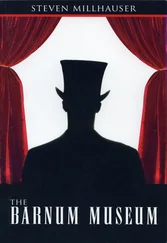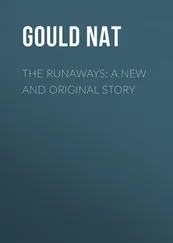17
Among the festive rooms and halls of the Barnum Museum, with their flying carpets, their magic lamps, their mermaids and grellings, we come now and then to a different kind of room. In it we may find old paint cans and oilcans, a green-stained gardening glove in a battered pail, a rusty bicycle against one wall; or perhaps old games of Monopoly, Sorry, and Risk, stacks of dusty 78 records with a dog and Victrola pictured on the center labels, a thick oak table-base dividing into four claw feet. These rooms appear to be errors or oversights, perhaps proper rooms awaiting renovation and slowly filling with the discarded possessions of museum personnel, but in time we come to see in them a deeper meaning. The Barnum Museum is a realm of wonders, but do we not need a rest from wonder? The plain rooms scattered through the museum release us from the oppression of astonishment. Such is the common explanation of these rooms, but it is possible to find in them a deeper meaning still. These everyday images, when we come upon them suddenly among the marvels of the Barnum Museum, startle us with their strangeness before settling to rest. In this sense the plain rooms do not interrupt the halls of wonder; they themselves are those halls.
18
It must be admitted that among the many qualities of the Barnum Museum there is a certain coarseness, which expresses itself in the stridency of its architecture, the sensual appeal of certain displays, and the brash abundance of its halls, as well as in smaller matters that attract attention from time to time. Among the latter are the numerous air ducts concealed in the floors of many halls and passageways. Erratically throughout the day, jets of air are released upward, lifting occasional skirts and dresses. This crude echo of the fun house has been criticized sharply by enemies of the museum, and it is certainly no defense to point out that the ducts were installed in an earlier era, when women of all ages wore elaborate dresses to the Barnum Museum — a fact advertised by framed photographs that show well-dressed women in broad-brimmed hats attempting to hold down their skirts and petticoats, which blow up above the knees as gallants in straw hats look on in amusement. For despite the apparent absurdity of air ducts in a world of pants, it remains true that we continue to see a fair number of checked gingham dresses, pleated white skirts, trim charcoal suits, belted poplin shirtwaists, jungle-print shifts, flowery wraparounds, polka-dot dirndls, ruffled jumpers, all of which are continually blowing up in the air to reveal sudden glimpses of green or pink panty hose, lace-trimmed white slips, gartered nylon stockings, and striped bikini underpants amidst laughter and shrill whistles. Our women can of course defeat the ducts by refusing to wear anything but pants to the Barnum Museum, but in fact the ducts appear to have encouraged certain women, in a spirit either of rebellion or capitulation, to dress up in long skirts and decorative underwear, a fad especially popular among girls in junior high school. These girls of twelve and thirteen, who often visit the museum in small bands, make themselves up in bright red or bright green lipstick and false eyelashes, carry shiny leather pocketbooks, and wear flowing ankle-length skirts over glossy plastic boots. The skirts rise easily in the jets of air and reveal a rich array of gaudy underwear: preposterous bloomers with pink bows, candy-colored underpants with rosettes and streamers, black net stockings attached to black lacy garter belts over red lace underwear, old-fashioned white girdles with grotesque pictures of winking eyes and stuck-out tongues printed on the back. Whatever we may think of such displays, the presence of fun-house air ducts in the Barnum Museum is impossible to ignore. To defend them is not to assert their irrelevance; rather, it is to insist that they lend to the museum an air of the frivolous, the childish, the provocative, the irresponsible. For is it not this irresponsibility, this freedom from solemnity, that permits the museum to elude the mundane, and to achieve the beauty and exaltation of its most daring displays?
19
The museum researchers work behind closed doors in small rooms in remote sections of the uppermost floors. The general public is not admitted to the rooms, but some visitors, wandering among the upper exhibits, have claimed to catch glimpses of narrow corridors and perhaps a suddenly opened door. The rooms are said to be filled with piles of dusty books, reaching from floor to ceiling. Although the existence of the researchers is uncertain, we do not doubt its likelihood; although the nature of their task is unknown, we do not doubt its necessity. It is in these remote rooms that the museum becomes conscious of itself, reflects upon itself, and speaks about itself in words that no one reads. The results of research are said to be published rarely, in heavy volumes that are part of immense multivolume collections stored in upper rooms of the museum and consulted only by other researchers. Sometimes, in a narrow corridor on an upper floor, a door opens and a chalk-pale man appears. The figure vanishes so swiftly behind the door that we can never be certain whether we have actually seen one of the legendary researchers, elusive as elves, or whether, unable to endure the stillness, the empty corridors, and the closed doors, we have summoned him into existence through minuscule tremors of our eye muscles, photochemical reactions in our rods and cones, the firing of cells in the visual cortex.
20
In the gift shops of the Barnum Museum we may buy old sepia postcards of mermaids and sea dragons, little flip-books that show flying carpets rising into the air, peep-show pens with miniature colored scenes from the halls of the Barnum Museum, mysterious rubber balls from Arabia that bounce once and remain suspended in the air, jars of dark blue liquid from which you can blow bubbles shaped like tigers, elephants, lions, polar bears, and giraffes, Chinese kaleidoscopes showing ceaselessly changing forms of dragons, enchanting pleniscopes and phantatropes, boxes of animate paint for drawing pictures that move, lacquered wooden balls from the Black Forest that, once set rolling, never come to a stop, bottles of colorless jellylike stuff that will assume the shape and color of any object it is set before, shiny red boxes that vanish in direct sunlight, Japanese paper airplanes that glide through houses and over gardens and rooftops, storybooks from Finland with tissue-paper-covered illustrations that change each time the paper is lifted, tin sets of specially treated watercolors for painting pictures on air. The toys and trinkets of the Barnum Museum amuse us and delight our children, but in our apartments and hallways, in air thick with the smells of boiling potatoes and furniture polish, the gifts quickly lose their charm, and soon lie neglected in dark corners of closets beside the eyeless Raggedy Ann doll and the dusty Cherokee headdress. Those who disapprove of the Barnum Museum do not spare the gift shops, which they say are dangerous. For they say it is here that the museum, which by its nature is contemptuous of our world, connects to that world by the act of buying and selling, and indeed insinuates itself into our lives by means of apparently innocent knickknacks carried off in the pockets of children.
21
The museum eremites must be carefully distinguished from the drifters and beggars who occasionally attempt to take up residence in the museum, lurking in dark alcoves, disturbing visitors, and sleeping in the lower passageways. The guards are continually on the lookout for such intruders, whom they usher out firmly but discreetly. The eremites, in contrast, are a small and rigorously disciplined sect who are permitted to dwell permanently in the museum. Their hair is short, their dark robes simple and neat, their vows of silence inviolable. They drink water, eat leftover rolls from the outdoor cafés, and sleep on bare floors in roped-off corners of certain halls. They are said to believe that the world outside the museum is a delusion and that only within its walls is a true life possible. These beliefs are attributed to them without their assent or dissent; they themselves remain silent. The eremites tend to be young men and women in their twenties or early thirties; they are not a foreign sect, but were born in our city and its suburbs; they are our children. They sit cross-legged with their backs straight against the wall and their hands resting lightly on their knees; they stare before them without appearing to take notice of anything. We are of two minds about the eremites. Although on the one hand we admire their dedication to the museum, and acknowledge that there is something praiseworthy in their extreme way of life, on the other hand we reproach them for abandoning the world outside the museum, and feel a certain contempt for the exaggeration and distortion we sense in their lives. In general they make us uneasy, perhaps because they seem to call into question our relation to the museum, and to demand of us an explanation that we are unprepared to make. For the most part we pass them with tense lips and averted eyes.
Читать дальше












